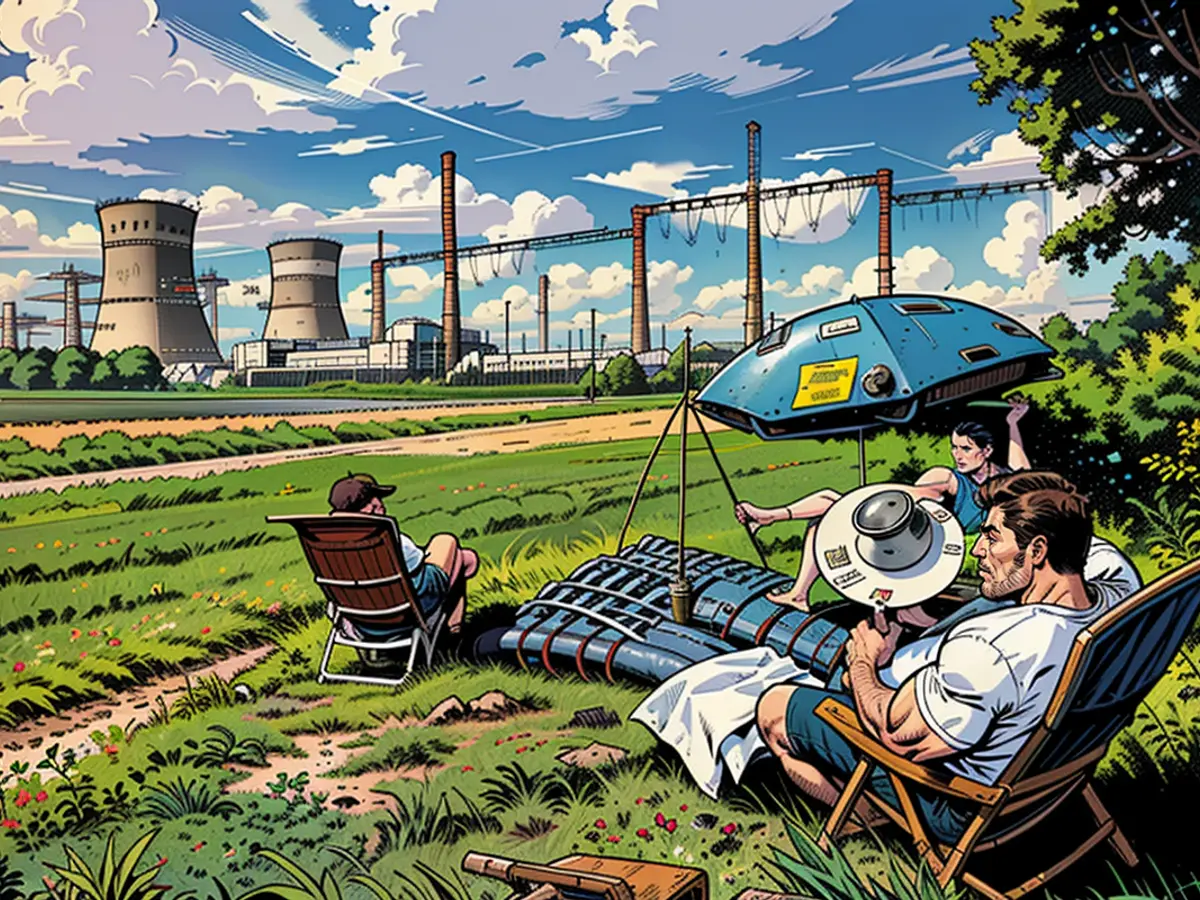Phase-out of nuclear power - Blowing up the power towers a spectacle for the spectators
A helicopter hovers over the grounds of the former nuclear power plant Grafenrheinfeld near Schweinfurt, with shipping on the nearby Main temporarily halted, and kilometers of barriers marking the exclusion zone. "We've done everything for a safe execution of the demolition and are convinced that this event will be successful and safe," says project leader Matthias Aron.
As evening approaches, the two towers of the plant are set to be brought down in a controlled collapse. Hours before the spectacle, hundreds of onlookers have settled on the meadows and fields surrounding the power plant. "If you want to have nice places, you have to come early," says Olaf Müller, who, with his brother and his girlfriend, is sitting just a few hundred meters from the power plant in the shade. They have a picnic blanket, an umbrella, camping chairs, and a cooler box with them. The trio hopes to capture impressive images for a slow-motion film they want to show in their family.
Nuclear waste issue remains unresolved
That the 143-meter-high towers will soon be history does not bother the 55-year-old from Hofheim, about 30 kilometers away. His family has always been against nuclear power - the most expensive way to generate electricity. And an energy source that will keep humanity busy forever. "There will never be a final repository," says Müller. In his opinion, it would be smarter to store nuclear waste above ground on the former power plant sites, thus having more control over the casks than in underground repositories.
The Jüngling family from Haßfurt (district of Haßberge) has settled on the other side of the Main, near Bergrheinfeld, with a folding table, snacks, and games. "We mainly play Rummikub," Nicole, 39, explains. Everyone is a bit excited, especially her 11-year-old son, who insisted they come. "I like it when things are blown up," Maximilian says. It's supposed to start at 6:30 PM - and within 30 seconds, the concrete giants will be reduced to rubble.
Decommissioning began in 2018
The NPP south of Schweinfurt was the oldest still-active nuclear power plant in Germany until it was shut down. Construction of the power plant began in 1974. The first chain reaction was initiated at the end of 1981, and electricity flowed into the grid from June 1982. It was in service for 33 years until 2015. Decommissioning has been underway there since 2018 - and will likely continue for another ten years.
Frequently Asked Questions about the demolition
- Despite the excitement surrounding the controlled demolition of the towers, concerns about the long-term management of nuclear waste persist, with Olaf Müller arguing that above-ground storage on former power plant sites might offer more control.
- The decommissioning process at Grafenrheinfeld NPP, which began in 2018, will likely take another decade to complete, making it a significant undertaking in terms of energy and resources.






